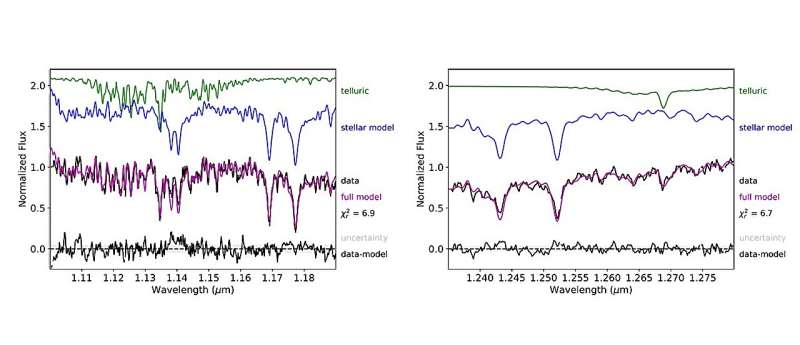July 18, 2024 report
This article has been reviewed according to Science X's editorial process and policies. Editors have highlighted the following attributes while ensuring the content's credibility:
fact-checked
preprint
trusted source
proofread
Observations detect a nearby hypervelocity stellar/substellar object

Using the Keck II telescope, astronomers have detected an object that may be a brown dwarf or a low-mass star, exhibiting a very high radial velocity. The object, designated CWISE J124909.08+362116.0 is located some 400 light years away. The finding was reported July 11 on the pre-print server arXiv.
Brown dwarfs (BDs) are intermediate objects between planets and stars, occupying the mass range between 13 and 80 Jupiter masses (0.012 and 0.076 solar masses). They form like stars but are not sufficiently massive to sustain hydrogen fusion in their cores.
Now, a team of astronomers led by Adam Burgasser of the University of California San Diego reports the detection of a new object at the brown dwarf/star mass boundary.
Using the Near-Infrared Echellette Spectrometer (NIRES) at the Keck II telescope, they investigated CWISE J124909.08+362116.0 (or CWISE J1249+3621 for short)—a high proper motion faint red source first identified by citizen scientists. As a result, it turned out that the source is a rare type of hypervelocity subdwarf.
"We report the discovery of a high velocity, very low-mass star or brown dwarf whose kinematics suggest it is unbound to the Milky Way. (...) The fastest 'hypervelocity' stars are unbound to the Milky Way's gravitational potential and may even have extragalactic origins," the researchers explained.
According to the study, CWISE J1249+3621 has a large radial velocity—at a level of -103 km/s. This gives the galactic rest frame speed of 456 km/s, which corresponds to 1,530 light years per one million years. Given that this result is just below the galactic escape velocity at the solar radius, which is currently estimated to be 521–580 km/s, the astronomers conclude that this object has a significant probability of being unbound to the Milky Way.
The observations found that CWISE J1249+3621 has a mass of some 0.082 solar masses and its effective temperature is estimated to be 1,715–2,320 K. The metallicity of CWISE J1249+3621 was measured to be within a range of -1.4 and -0.5.
Based on the collected data, the authors of the paper assume that CWISE J1249+3621 is likely a hypervelocity metal-poor, early-type L subdwarf star rather than a brown dwarf. They underline that it may therefore be the first known low-mass hypervelocity star and the nearest such object to Earth.
In trying to determine the origin of CWISE J1249+3621, the researchers take into account several different hypotheses, including ejection from the galactic center more than three billion years ago, or a survival as the companion to an accreting white dwarf that exploded.
Further investigation into physical and atmospheric properties of this object is required in order to infer its true origin.
More information: Adam J. Burgasser et al, Discovery of a Hypervelocity L Subdwarf at the Star/Brown Dwarf Mass Limit, arXiv (2024). DOI: 10.48550/arxiv.2407.08578
Journal information: arXiv
© 2024 Science X Network





















